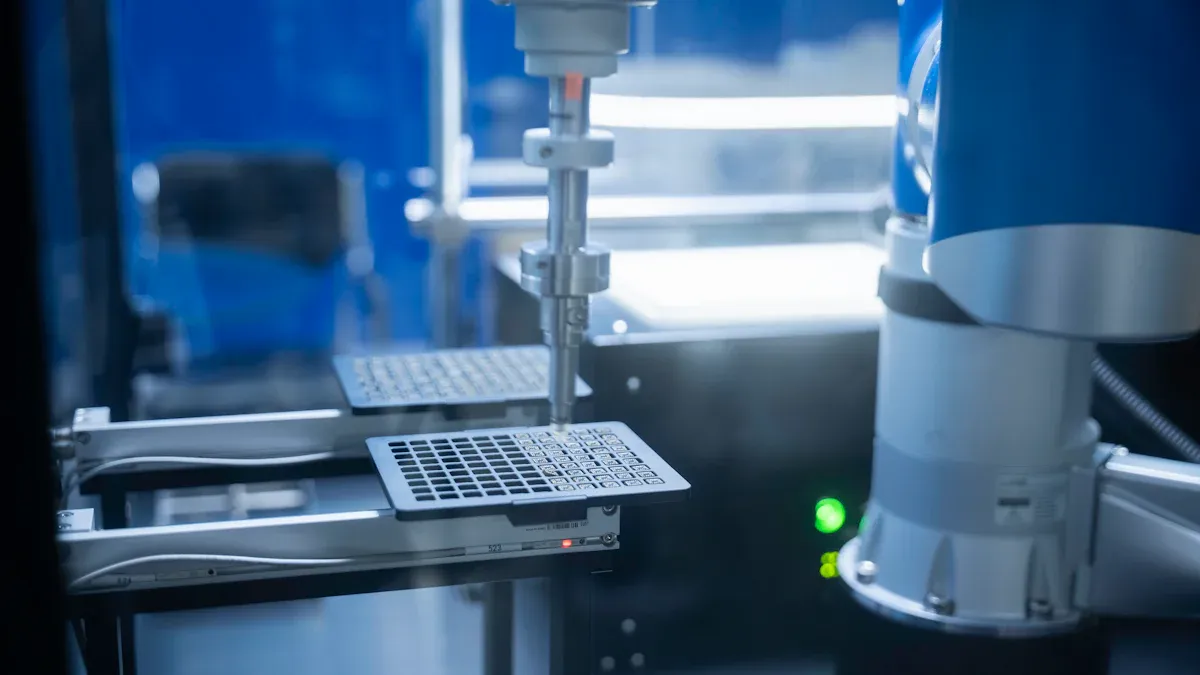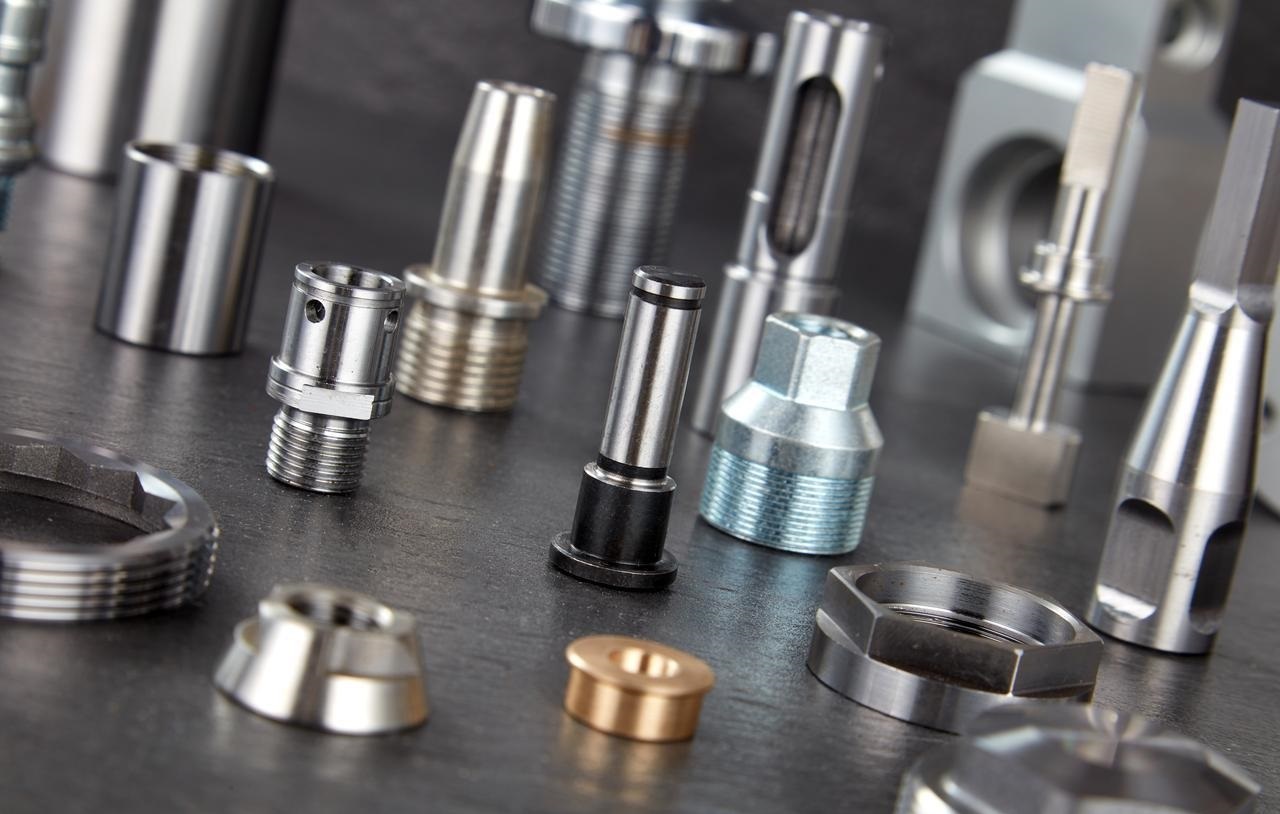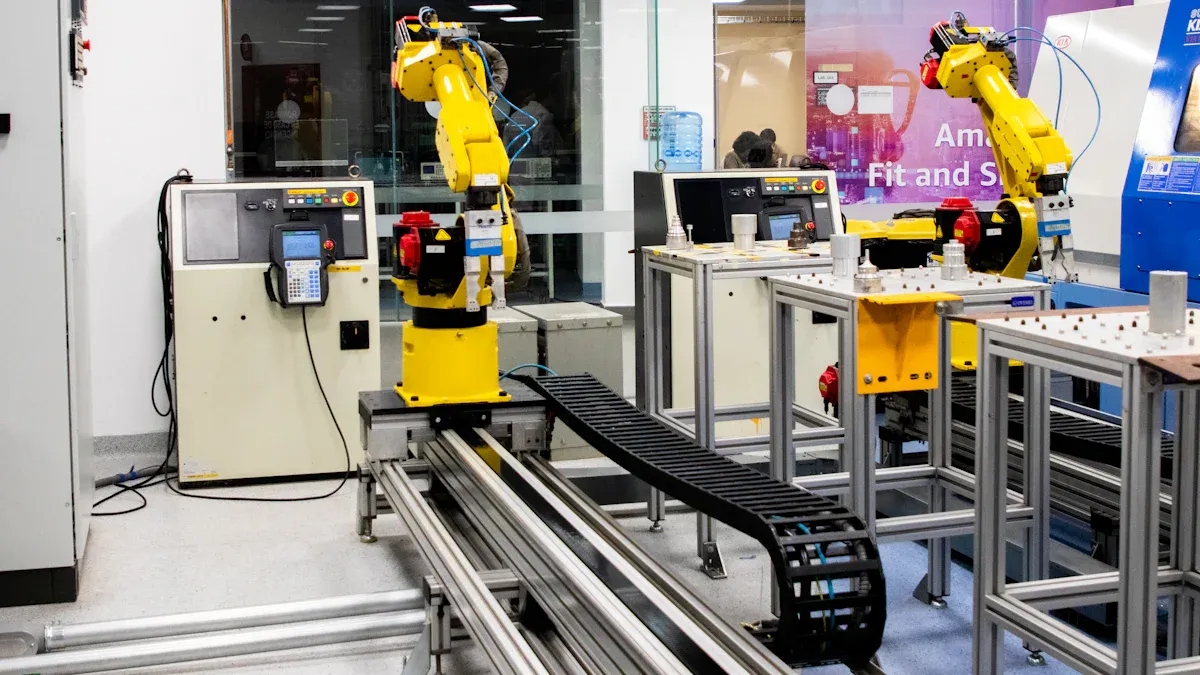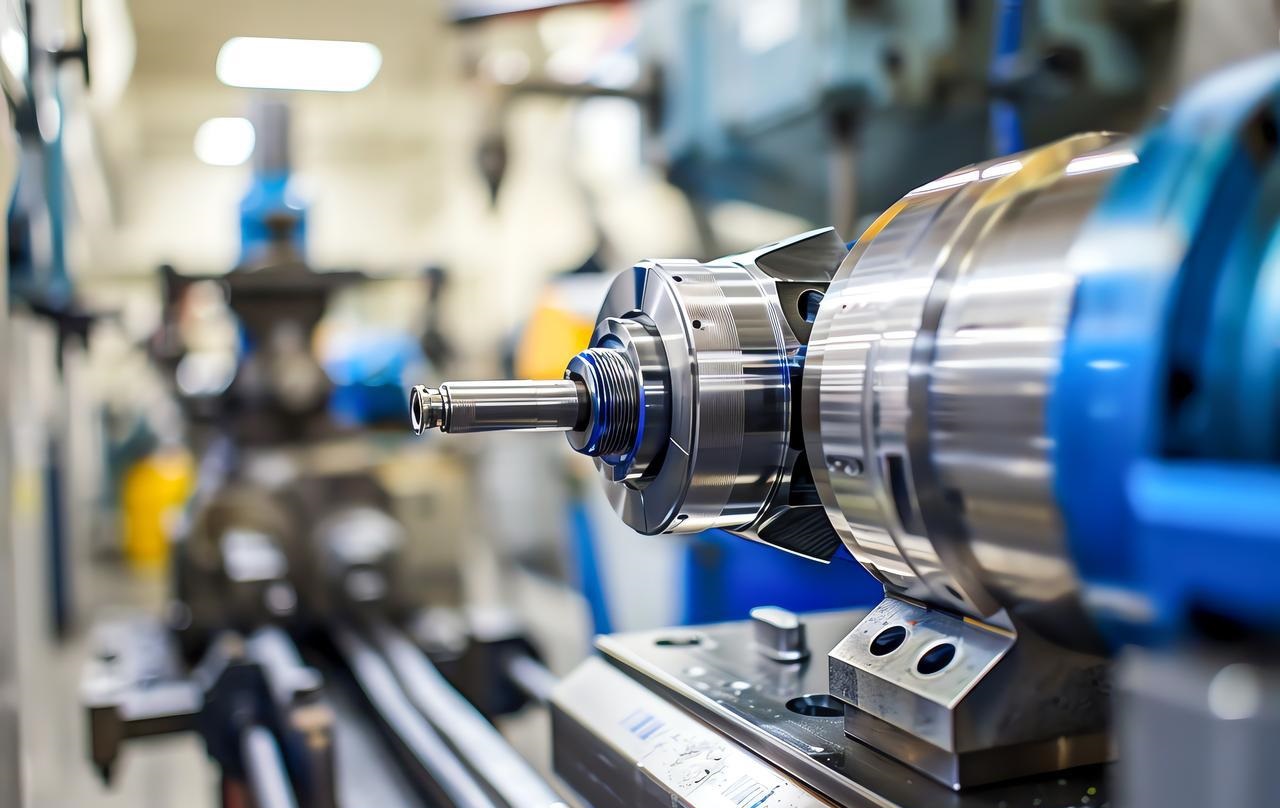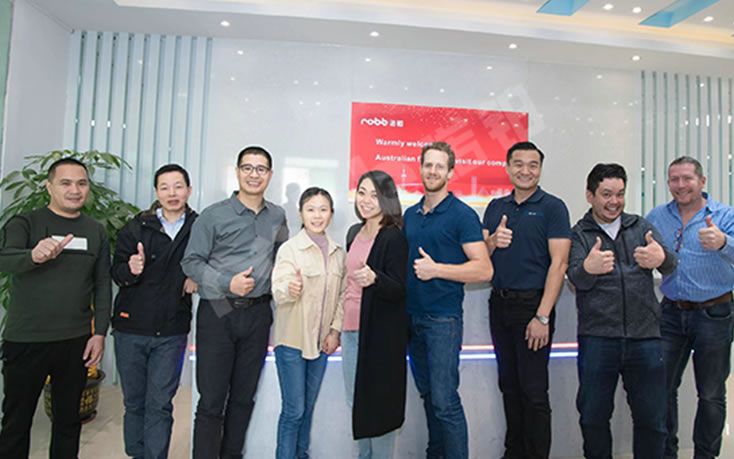What is 5-axis machining?
Five-axis machining is an advanced CNC machining technology that adds two rotary axes (typically the A, B, or C axes) to the traditional three linear axes (X, Y, and Z) to achieve synchronized motion control of the workpiece in five degrees of freedom. This multi-axis interpolation capability enables the machine tool to machine complex parts from any angle without re-clamping. Five-axis machining is particularly suitable for the production of parts with complex curved surfaces, angled holes, or irregular structures, enabling multi-surface machining in a single operation, significantly improving precision and efficiency. Compared to traditional three-axis machining, five-axis technology allows the use of shorter tools, reduces vibration, enhances cutting parameters, and achieves better surface quality. This technology is widely applied in industries with high precision requirements, such as aerospace, medical devices, and automotive tooling, and is one of the core technologies of modern precision manufacturing.
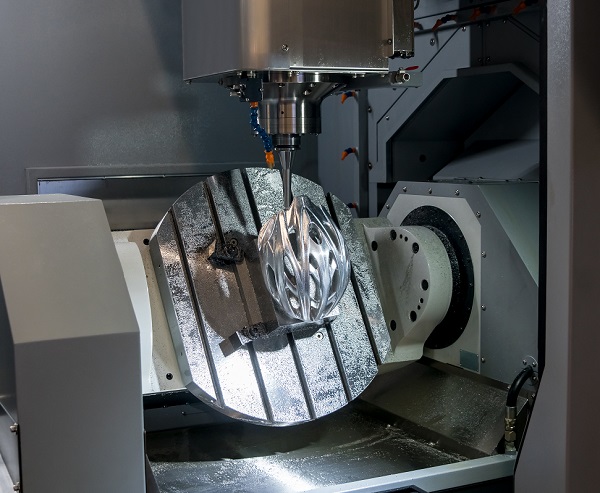
Advantages of 5-Axis CNC Machining Services
1. One-Time Forming of Complex Parts
In today’s precision manufacturing field, 5-axis CNC machining services are reshaping industry standards for complex parts processing with their unique technical advantages. The most revolutionary advantage is the ability to “form complex parts in one go,” a breakthrough technology that has completely changed traditional processing models.
Traditional three-axis machining methods often require cumbersome multiple clamping processes when dealing with parts featuring complex geometric shapes. Take the machining of aircraft engine blades as an example: using a three-axis machine tool may require 4–6 repositioning and clamping operations to complete all machining surfaces. Each re-clamping not only consumes a significant amount of time (statistically averaging 15-30 minutes per clamping), but more critically introduces new positioning errors (typically 0.02-0.05mm). This cumulative error directly compromises the relative positional accuracy between different machined surfaces, severely impacting assembly quality and performance.
5-axis machining technology achieves precise positioning of the workpiece in five degrees of freedom in space through the coordinated movement of its unique A/B/C rotational axes and X/Y/Z linear axes. This means that even parts with complex curved surfaces, inclined holes, or irregular structures can be fully machined in a single setup. Taking turbine housing machining as an example, five-axis technology can simplify a process that originally required five setups into a single setup, reducing processing time by over 40% while improving critical position tolerances from ±0.05mm to within ±0.01mm.
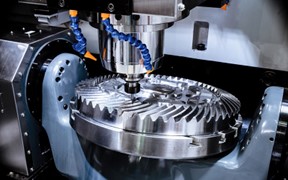
The quality improvements brought by this one-step machining technology are evident in multiple dimensions: first, it eliminates reference conversion errors caused by multiple setups, ensuring that all machining features are based on the same original reference; second, it reduces the risk of surface scratches caused by repeated setups; most importantly, by optimizing tool paths, more reasonable cutting parameters can be achieved, resulting in better surface integrity. The processing of artificial joints in the medical industry is a typical example. Five-axis machining not only reduces the production cycle by 60% but also achieves a surface roughness of Ra0.2μm, a mirror-like finish that fully meets the biocompatibility requirements for implants.
With the development of smart manufacturing, modern five-axis machining centers have integrated online measurement compensation systems, enabling real-time monitoring of critical dimensions during machining and automatic correction of tool paths, pushing one-time forming accuracy to new heights. This technology is particularly suitable for parts with stringent dimensional and geometric tolerance requirements, such as new energy battery housings and optical component brackets.

2. Improving Machining Efficiency
First, in terms of tool usage optimization, five-axis machining leverages its unique spatial positioning capabilities to intelligently adjust the workpiece angle, ensuring the tool remains in the optimal cutting position at all times. This technological feature brings about a revolutionary change: shorter, more rigid tools can be used during machining. Compared to traditional three-axis machining, the tool length in five-axis machining can be reduced by an average of 30–50%. This short tool system offers significant technical advantages. – Vibration amplitude is reduced by over 60%, and tool deflection is reduced by 45%, enabling cutting parameters to be increased by 20-30%, directly leading to a significant improvement in metal removal rate. For example, in the machining of aerospace aluminum alloy parts, the metal removal rate of five-axis machining can reach 300-500 cm³/min, which is 1.5-2 times that of three-axis machining.
Secondly, in terms of process time savings, five-axis machining achieves multiple efficiency improvements. By reducing the number of workpiece re-clamping operations, single-piece processing time can be reduced by 40-60%. Taking typical automotive mold machining as an example, traditional three-axis machining requires 5-7 clamping operations, taking approximately 8 hours; whereas five-axis machining requires only 1-2 clamping operations, reducing the time to 3-4 hours. Additionally, optimized tool paths reduce idle travel by over 50%, increasing the proportion of effective cutting time from the conventional 60% to 85%.
More importantly, five-axis machining achieves integrated optimization of production processes. Traditional dispersed multi-process machining is consolidated into a continuous automated process, reducing waiting time between processes and logistics turnover. Modern five-axis machining centers are equipped with large-capacity tool magazines holding over 60 tools and rapid tool-changing devices (tool-changing time of 1-2 seconds), combined with high-pressure cooling systems (pressure up to 70-100 bar) and intelligent chip removal systems, enabling continuous unmanned machining for over 72 hours. This highly efficient production model is particularly suitable for the machining of high-precision parts in large volumes, such as medical implants and precision gears.
In a real-world production case, a certain aerospace structural component achieved a reduction in single-piece processing time from 18 hours to 7 hours after adopting five-axis machining, with tooling costs decreasing by 40%, while the product rate increased from 92% to 99.5%. These figures demonstrate the outstanding performance of 5-axis machining in enhancing production efficiency. With the advancement of intelligent control technology, the next generation of five-axis machining centers also features adaptive cutting optimization functionality, enabling dynamic parameter adjustments based on actual cutting conditions to further unlock production efficiency potential.
3. Exceptional surface quality
5-axis machining technology has set new industry standards for workpiece surface quality through its unique motion control capabilities. The core of this technological advantage lies in its ability to intelligently optimize tool paths, ensuring that the cutting process is always in optimal condition.
In terms of cutting process control, the five-axis machining system uses precise motion algorithms to maintain a constant optimal contact angle between the tool and the workpiece. This dynamic adjustment capability delivers revolutionary machining results: cutting force fluctuations are reduced by over 50%, and chip thickness variations are controlled within ±5%. Taking titanium alloy aerospace component machining as an example, the cutting force stability of five-axis machining is three times higher than that of three-axis machining, directly yielding two key advantages: tool life is extended by 40–60%, and surface roughness is improved by 30–50%.
In terms of surface finish, five-axis machining demonstrates unparalleled advantages. By maintaining constant cutting conditions and optimized tool trajectories, a mirror-like finish with a surface roughness of Ra0.4μm or below can be achieved. Such surface quality is particularly critical in high-end fields such as medical devices and optical components. Actual test data shows that the surface roughness of artificial joint ball heads produced by five-axis machining can reach Ra 0.1–0.2 μm, fully meeting implant requirements, while reducing subsequent polishing time from 4 hours to 30 minutes.
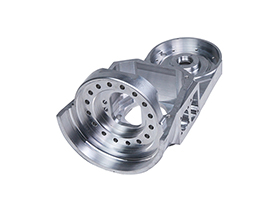
Applications of 5-Axis CNC Machining
1. Aerospace Industry
In the aerospace manufacturing sector, 5-axis CNC machining has become an indispensable core technology. This technology perfectly meets the aerospace industry’s demands for processing complex structures, ultra-high precision, and special materials. Large monolithic structural components of modern aircraft, such as wing spars and fuselage frames, require precision milling using five-axis machining centers. Critical components of aircraft engines are prime examples of five-axis machining applications: turbine blades must be machined to produce precise aerodynamic surfaces, compressor disks must ensure strict dynamic balance characteristics, and combustion chamber assemblies require complex cooling channel structures. These components are typically made from difficult-to-machine materials such as titanium alloys and nickel-based high-temperature alloys. Five-axis machine tools, with their superior rigidity and intelligent cutting control, can achieve stable and efficient machining of these materials. Notably, precision components in spacecraft, such as satellite mounts and rocket engine nozzles, require machining accuracy at the micron level—a domain where five-axis machining truly excels.
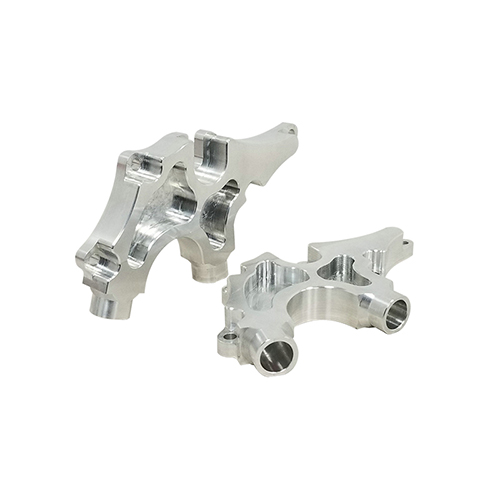
2. Medical Device Manufacturing
The medical industry has a particular reliance on 5-axis CNC machining, primarily due to the stringent standards for biocompatibility and surface quality required for medical devices. Artificial joints (such as hip cups and knee prostheses) require complex anatomical surfaces that must perfectly match human bones, and five-axis machining can precisely replicate these customized designs. Dental implants with micro-threads and internal connection structures demand sub-micron surface precision, which is precisely where five-axis machines excel. Modern surgical instruments, particularly minimally invasive surgical tools, require five-axis technology to achieve their intricate curved structures and sharp edges. It is worth noting that the medical industry’s special requirements also include: the machining process must avoid cross-contamination, and the surface must have no machining marks or micro-cracks, which necessitates five-axis machining centers to be equipped with specialized cleaning systems and process control programs. With the development of personalized medicine, five-axis machining demonstrates greater advantages in the production of small-batch, customized medical products.

3. Automotive Industry
The automotive manufacturing industry is undergoing a technological revolution, with 5-axis CNC machining playing an increasingly important role. In the traditional internal combustion engine sector, five-axis technology is used to machine complex components of high-performance engines: the crankshaft holes and camshaft holes in the cylinder block require extremely high coaxiality, while the turbine wheels of turbochargers demand precise fluid dynamics surfaces. In the manufacturing of race cars and concept cars, five-axis machining enables the production of precision molds for carbon fiber components and the integrated machining of lightweight metal structures. With the rapid development of electric vehicles, new application areas are continuously emerging: the machining of large thin-walled structures for battery housings requires the stability of five-axis machines, cooling channels in motor housings demand the flexibility of five-axis technology, and precision gears in electric drive systems necessitate the ultra-precision machining capabilities of five-axis systems. Emerging components such as sensor brackets for intelligent driving systems and laser radar housings also impose higher demands on five-axis machining. The mass production characteristics of the automotive industry further drive continuous innovation in automation and intelligence for 5-axis machining.

Factors to Consider When Selecting a 5-Axis CNC Machining Center
1. Machining Requirements Analysis
When purchasing a five-axis machining center, the first task is to conduct a detailed analysis of machining requirements. This requires consideration from multiple dimensions: first, determine the material characteristics of the parts to be machined, including metal type (such as aluminum alloy, titanium alloy, or high-temperature alloy), hardness range, and special machining requirements (such as thin-walled part machining). Second, assess the physical dimensions of the parts, including maximum outer dimensions, weight, and the smallest feature dimensions that need to be machined. More importantly, clearly define the machining accuracy requirements, including critical metrics such as dimensional tolerances, geometric tolerances, and surface roughness. For example, aerospace structural components typically require positioning accuracy within 0.01 mm, while the mold industry may place greater emphasis on surface quality. Additionally, the structural complexity of the part is a critical consideration, such as the presence of deep cavities, narrow slots, or complex curved surfaces. The selection of appropriate machine tools should precisely align with these requirements, avoiding both the waste of resources caused by over-capacity equipment and the compromise of processing quality due to underperforming equipment.
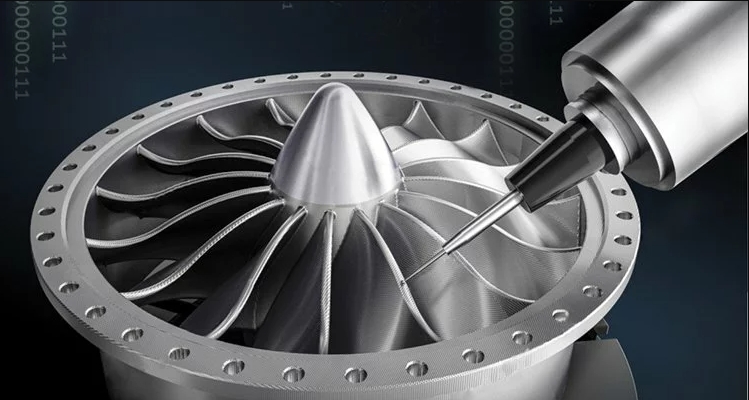
2. Machine Tool Accuracy Grade
The accuracy grade of a five-axis machine tool is a core consideration when selecting a machine. Machine tool accuracy is primarily measured by the following key parameters: positioning accuracy (typically 0.005–0.015 mm), repeat positioning accuracy (typically 0.003–0.008 mm), and contour machining accuracy. Different industries have significantly varying precision requirements: aerospace and precision medical industries often require ultra-high precision models (positioning accuracy ≤ 0.005 mm), while general mechanical manufacturing may only require precision of 0.01–0.02 mm. It is worth noting that machine tool precision depends not only on nominal parameters but also on long-term stability, including temperature compensation capability, vibration resistance, and precision retention cycle. For the processing of high-value-added parts, it is recommended to select a machine tool with a precision grade one level higher than the current requirements to leave room for future development. At the same time, the dynamic precision performance of the machine tool should be considered, i.e., the trajectory precision during high-speed processing, which is particularly important for complex surface machining.
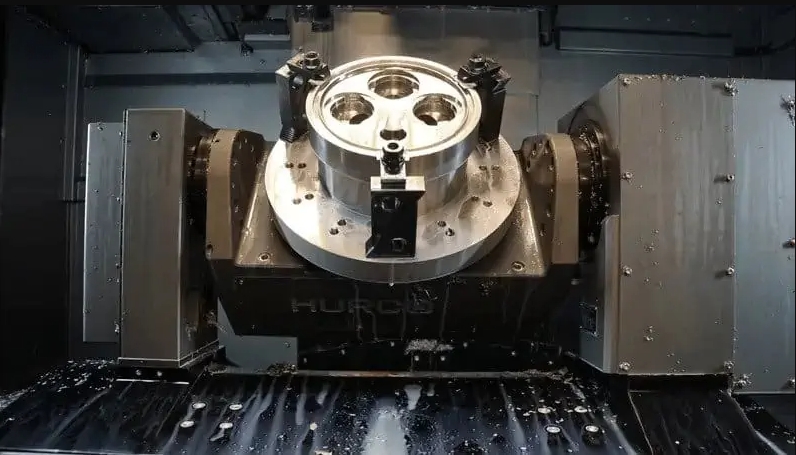
3. Rotary Table Specifications
As a core component of a five-axis machine tool, the performance parameters of the rotary table directly impact machining capabilities. When evaluating the table, the first considerations are size specifications and load-bearing capacity: standard models typically have a table diameter ranging from 400 to 800 mm and load-bearing capacities from 500 to 3,000 kg. Customized tables may be required for large-part machining. Rotational speed characteristics are equally critical: ordinary machining can be satisfied with 200-500 rpm, while high-speed milling may require a table capable of 1000 rpm or higher. Table precision metrics include rotational accuracy (typically 0.005-0.01 mm) and tilt accuracy, which directly impact machining quality during five-axis interpolation. For heavy-duty cutting applications, the table’s rigidity performance and torque output capability must also be evaluated. Modern high-end workbenches typically feature direct drive technology and hydraulic clamping systems, enabling them to meet both high-speed and high-rigidity requirements simultaneously. When selecting a workbench, it is recommended to reserve a 20-30% performance margin based on typical part processing requirements to ensure long-term reliability.
Whether you need custom prototypes or mass production, NOBLE’s 5-axis CNC machining centers can deliver. By partnering with NOBLE, a professional CNC machining parts manufacturer in China, you gain access to technical expertise and cost-effectiveness.
5-Axis Machining of FAQs
How do I choose a reliable 5-axis machining parts manufacturer?
Look for manufacturers with advanced equipment, experienced engineers, strict quality control, and the ability to work with different materials.
What industries benefit most from 5-axis CNC machining?
Industries such as aerospace, automotive, medical device manufacturing, and mold making benefit from the precision and versatility of 5-axis CNC machining.


